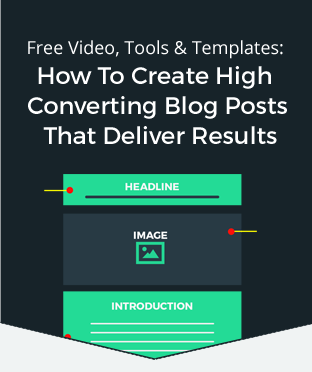Mastering Google Analytics: 10 Key Metrics Every Marketer Should Track
Data is the ultimate asset for a marketer. When properly tracked and deployed, it can inform budgeting decisions, refine strategies, and grant powerful insights into audiences. Moreover, when the leadership team or client wants proof that all marketing efforts have been worthwhile, data is the key to demonstrating tangible results.
Set your team up for success by monitoring these 10 key Google Analytics metrics.
Metrics to Measure Inbound Traffic and Offsite Promotion
1. Sessions
The first listed metric is arguably the most self-explanatory, as “sessions” embodies the number of visits to your site. While observing this metric on its own is helpful, its true value lies in how you segment out the data. Consider using sessions to dive deeper into:
- Default channel groups – Found under Acquisition, this view will enable you to see how your visitors are accessing your site, such as Organic Search, email marketing, Paid campaigns, etc. For a more detailed view, consider the session source / medium view of your Session data.
- Individual campaigns – Let’s say Google Analytics reports that Organic Social sessions grew 20% from Q3 versus Q2. Great! Now, the real question is which posts specifically contributed most to this success. If you follow proper UTM protocols when crafting your posts, you will be able to easily discern which individual campaigns featured the winning formula.
2. Users
Users and sessions are two Google Analytics metrics commonly confused with one another. Here’s a simple way to tell them apart: if Bob visits your site five times over three days, Google Analytics records this as one user but five sessions.
To reap the greatest insights from this specific metric, evaluate:
- New vs. Returning Users – The number of new users shows how effectively off-site promotion is bringing in fresh audiences. In contrast, returning users indicate positive past interactions with your site or brand and may include current customers. Since these metrics capture distinctly different groups, both are essential to track.
- Users by Location – Evaluating which regions users come from is helpful for three purposes:
- Location user data may illuminate how many of your visitors are geographically positioned to use your services. For example, if you run an eCommerce store that only ships to a select group of countries, visitors from outside your reach will inevitably be less valuable.
- Insights into visitors’ locations can help shape future content or translation strategies.
- Drilling down into the users’ specific cities can help reveal which ones are more likely to be bots. For example, as discussed in this Google forum, Ashburn Virginia is home to a number of prolific cloud providers that crawl sites at high frequency, commonly leading to their bots being reported in Google Analytics as users hailing from this city.
3. Landing Page
Landing pages — distinct from page views — show where visitors first enter your site. In Google Analytics, this view lets you compare different landing pages based on sessions, users, engagement, transactions, and more. While “landing pages” aren’t technically a metric, they’re too valuable to overlook. This data grouping can reveal:
- Which content drives the most sessions, particularly from organic sources like SEO or social media.
- The intent of your visitors. For example, those arriving via blog posts may be earlier in their journey than those landing on a product page.
- Where to refine content and design for a stronger first impression. A weak blog post template, for instance, might discourage deeper exploration, which will be reflected in landing page data.
Metrics That Reflect Onsite Engagement
4. Page Views
Page views reveal how often users interact with your content. While this metric includes those who land on the site through specific URLs, it also reflects which pages visitors actively navigate to once they’re there. This helps identify the topics that interest them most. If an important page isn’t receiving a strong number of views, it could point to issues with navigation or visual calls to action.
5. Search Bar Usage and Queries
Older iterations of Google Analytics made it easy to find out the number of search interactions that occurred, as well as the specific internal queries. GA4 still grants these sorts of insights, though through a much more complicated setup.
Still, this metric is valuable as it highlights the products or information customers actively seek, along with the attributes and language they use (e.g., “round table for 6”). Additionally, search bar usage can indicate the quality of the onsite experience. If users rely on search to find pages that should be easily accessible through top navigation, it may signal a usability issue. Likewise, if GA4 data shows repeated searches or users abandoning their queries, refining the search function could improve their experience.
6. Engagement Rate
When Google Analytics transitioned from UA to GA4, its definition of “engagement” changed significantly. Engaged now means that a session lasts more than 10 seconds, includes at least two page views, or results in one key event. This metric helps assess the quality of visitors from different offsite campaigns. For example, if Paid Search brings in a surge of traffic but engagement rates are low, it’s a clear sign your budget isn’t being well spent.
Differences in engagement rates across landing pages reveal which site experiences are performing well and which need improvement. In the case of poor engagement from PPC visitors, it could point to a poorly designed landing page. Ultimately, comparing URLs and conducting tests can help identify areas for optimization.
7. Average Engagement Time per Session
ChatGPT said: Reviewing the definition of “engagement rate” above, it’s clear that the bar is relatively low. After all, a user can spend more than 10 seconds on a site before realizing it has a frustrating user experience. This is where the metric “Average Engagement Time per Session” comes in.
Average Engagement Time per Session measures the average time that users are actively engaging with your app or site during a session. It helps you better understand the quality of interactions, highlighting whether visitors are genuinely interested in your content or whether you swiftly lose their interest.
Conversion-Themed Metrics
8. Key Events Tied to Mid-Funnel Interactions
Regardless of the type of offering you’re marketing, several key steps must occur between a visitor’s first click and the final conversion. Along the way, there are specific benchmarks that signal strong interest or a higher likelihood of future conversion. These may include:
- Downloading a PDF
- Viewing a video
- Subscribing to a newsletter
- Using an online calculator
- Creating an online account
- Interacting with a live chat
- Clicking a phone number to call
Marking these mid-funnel interactions as key events in GA4 provides valuable insights into user engagement and interest levels, allowing you to track their journey and identify potential drop-off points.
9. Started Transactions
Not everyone who begins a form or adds items to a cart will finish the conversion action. Monitoring the number of starts versus completions can help identify potential onsite issues. By annotating such behaviors as “key events” in Google Analytics, you can assess future user-experience changes to forms or cart experiences. Additionally, high drop-off rates between conversion attempts and completions can flag other marketing issues, such as:
- Points of customer friction – Are high shipping costs deterring potential buyers? Is a complicated checkout process leading to frustration? The more cart-related data you analyze, the better you can pinpoint these barriers.
- Visitors are “unqualified” or have low intention of engaging – Let’s say you have a gated PDF. If there’s a significant gap between clicks and form completions, it may indicate your campaigns attract casual browsers rather than serious prospects.
10. Successful Conversions
Tracking conversions with GA4 — whether they’re form completions, eCommerce purchases, or actions you deem likely to lead to offsite engagement — helps measure which marketing efforts drive valuable leads.
Evaluating both the number of transactions and total revenue associated with various campaigns can illuminate which strategies attracted the most valuable leads. Supplementary metrics that can shed further light onto your core audience’s buying behavior include:
- The average user lifetime value
- Days to events
- Top key event paths
- Touchpoints to key events
- Cost per key event (as it relates to paid campaigns)
- Transactions per item
- Transactions by landing page type
Assigning Value to the Data
Sooner or later, every marketer encounters the phrase “data dump,” a term referring to the data delivered to excess without any distinguishable takeaways. This is to be avoided, especially if you are presenting the metrics to your leadership team or a client.
Rather, it’s your job as a marketer to track these GA4 metrics and then draw significance from the raw figures. When combing through the numbers, consider the following marketing questions:
- In general, are we able to tie specific marketing strategies directly or indirectly to specific changes in metrics?
- Did a recent marketing campaign perform better or worse than expected? If yes, what takeaways can we learn or further test?
- Which landing pages saw the largest changes, and why?
- Which pages (and page types) experienced the greatest interactions?
- Did recent site changes have a positive or negative impact?
- What are the engagement rates and conversion rates of users coming through specific channels or campaigns?
For more insights into how to tactically leverage Google Analytics metrics, read How to Work With Raw Data and Transform It Into a Compelling Marketing Narrative.
Share This Story
Get the latest growth ideas, strategies, and best practices delivered to your inbox.
Quick read that helps 7000+ subscribers.









